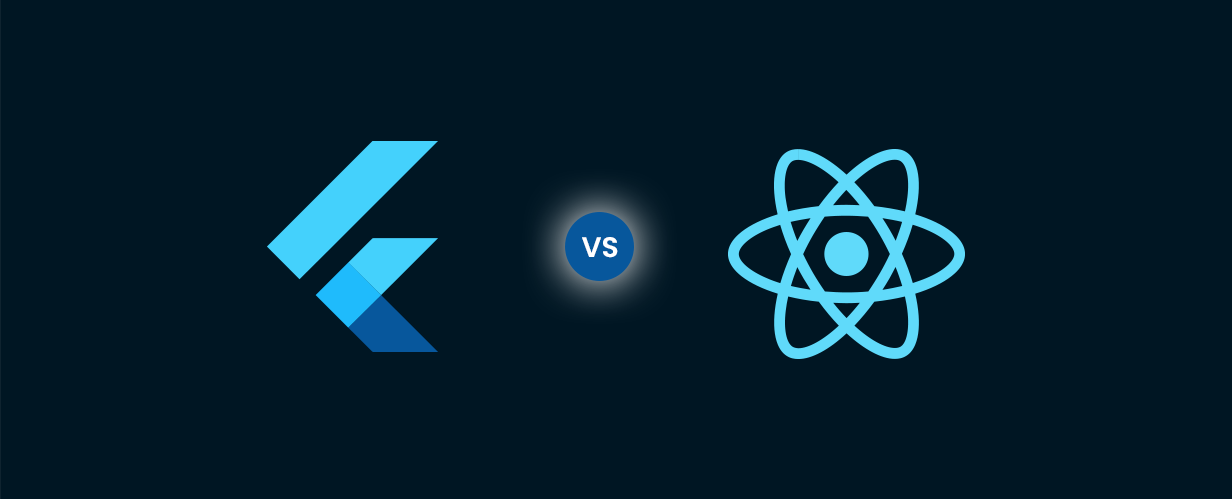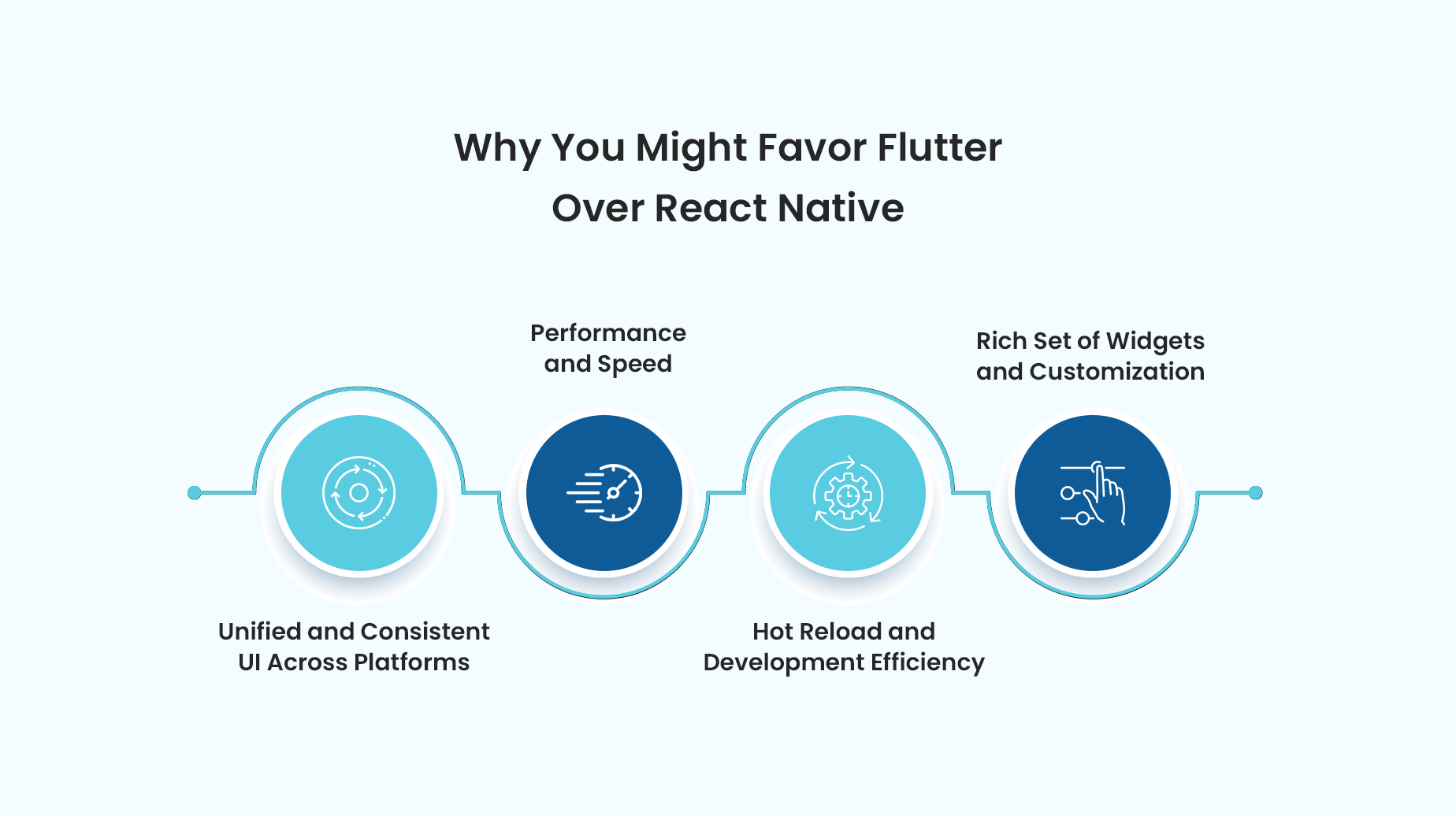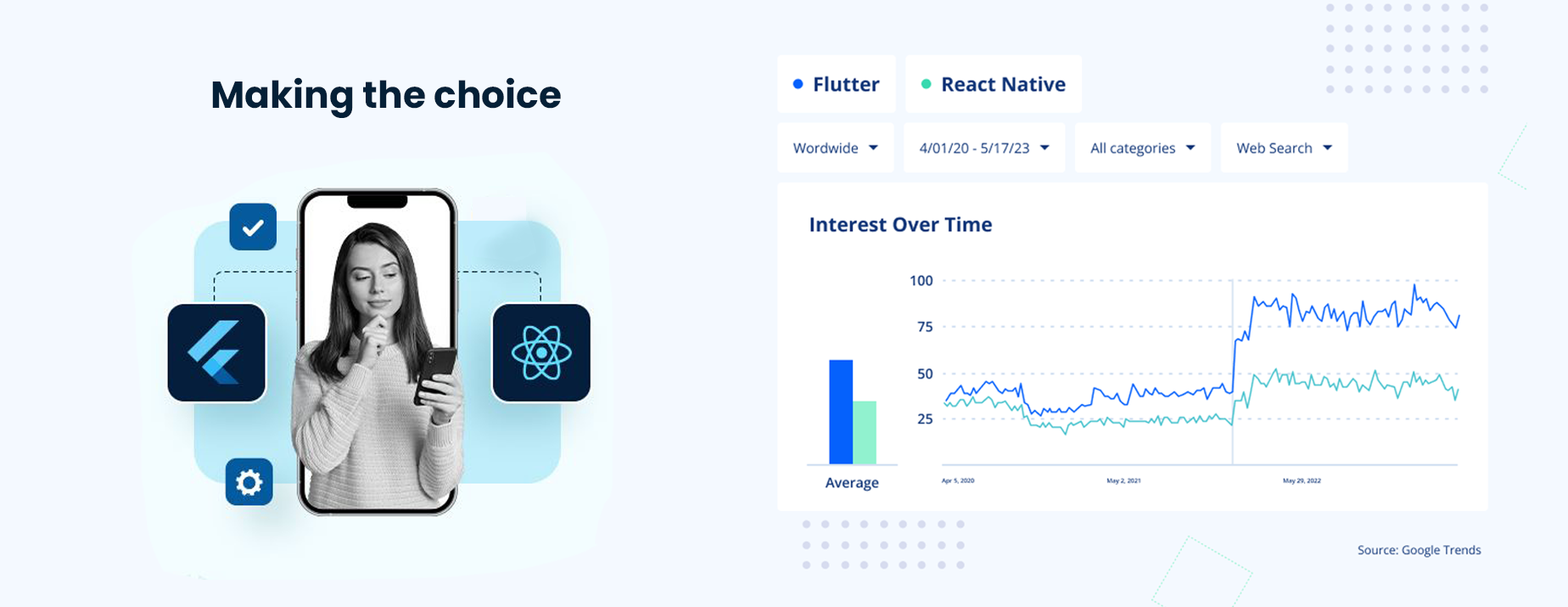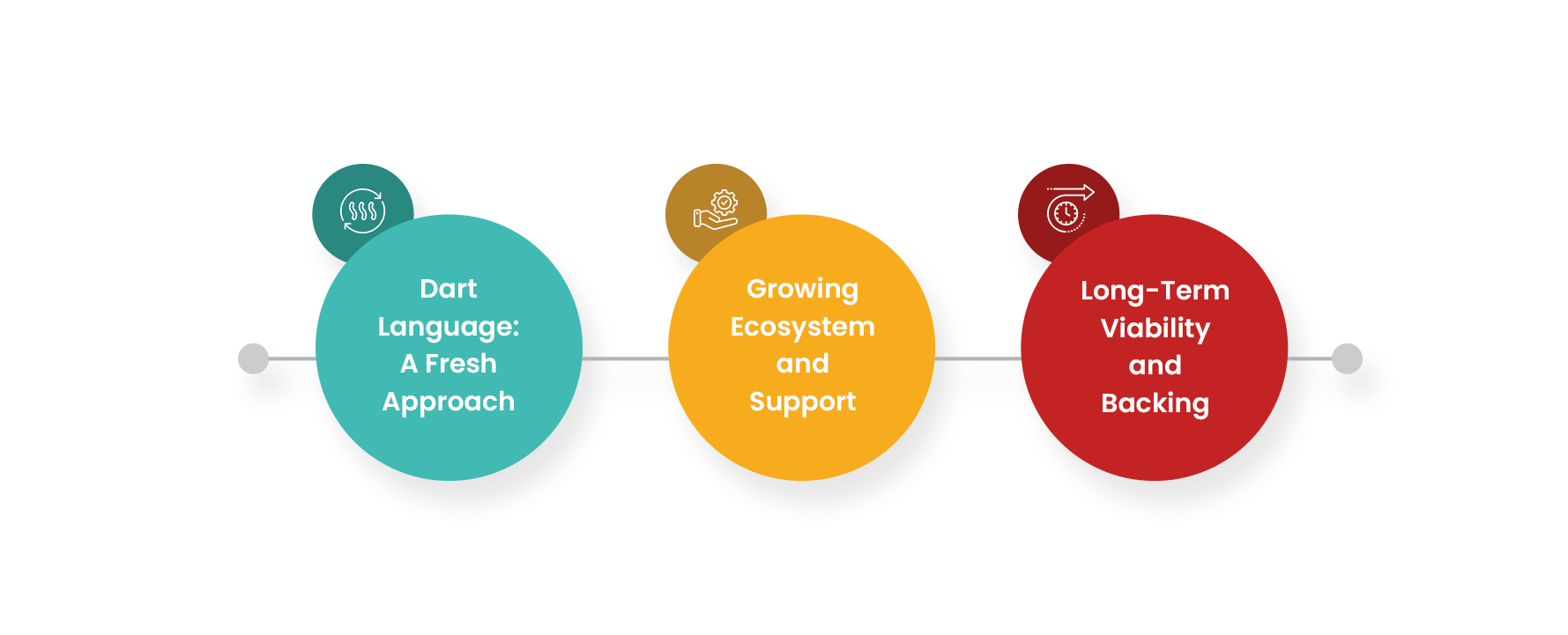Why Flutter Could Be Your Best Bet Over React Native for Mobile App Development

Introduction
In today’s competitive mobile app development landscape, choosing the right framework can significantly impact the success of your project. Among the most popular choices are Flutter and React Native two robust frameworks that promise cross-platform development efficiency. React Native, backed by Facebook, has been a strong force for years. However, Flutter, Google's open-source UI toolkit, is rapidly gaining popularity due to its performance, flexibility, and developer-friendly features.
If you're in the process of evaluating which framework to use for your next project, this blog will explore why Flutter may just be the better option. From seamless UI consistency to superior performance, we’ll delve into the key advantages Flutter offers over React Native and how it can help developers deliver high-quality mobile apps more efficiently.

1. Unified and Consistent UI Across Platforms
Flutter: Consistency through Custom Rendering
One of Flutter's biggest strengths lies in its ability to create a unified, visually appealing UI across iOS and Android. Using its own rendering engine and a wide array of pre-built widgets, Flutter eliminates the need to rely on platform-specific components. This means developers can design interfaces that look exactly the same across both platforms, maintaining consistency without additional effort.
With Flutter, the UI is drawn directly on a canvas using the Skia engine, bypassing native UI components. As a result, it offers unmatched flexibility and ensures that the app behaves consistently, regardless of the operating system. Customization becomes much easier since you’re not constrained by the limitations of the native platform's UI elements.
React Native: Native-Like Components but with Variances
React Native, on the other hand, relies on native components. While this ensures a more "native-like" look and feel, it also introduces subtle differences in appearance and behavior between platforms. Developers often need to write platform-specific code to adjust layouts or fine-tune the user experience on iOS versus Android. Achieving uniformity can require significant effort, and small variations in how components render natively can introduce inconsistencies.
In contrast, Flutter’s full control over the UI stack means a more predictable and cohesive visual experience without the need for platform-specific workarounds.
2. Performance and Speed
Flutter: Native-Like Performance with Skia Engine
Performance is one area where Flutter truly shines. Thanks to its ability to compile to native ARM code for both iOS and Android, Flutter apps tend to perform as well as, or even better than, fully native apps. The Skia rendering engine enables smooth 60fps animations, which are critical for modern apps that demand fluid user interfaces. Because Flutter doesn’t rely on a bridge between JavaScript and native code, there’s minimal overhead, and performance remains snappy even under heavy graphical workloads.
This is especially useful for apps with complex animations or high-performance requirements, such as gaming apps or apps with intricate UI transitions. The direct compilation to native code ensures that Flutter can handle these tasks efficiently.
React Native: JavaScript Bridge and Its Overheads
React Native, while performant, doesn’t achieve the same level of efficiency as Flutter in performance-heavy scenarios. React Native apps utilize a JavaScript bridge to communicate with native modules, which can introduce delays or “jank,” especially during complex animations or when handling intensive tasks. Although the framework has seen many optimizations over the years, such as the introduction of Hermes (a lightweight JavaScript engine) to speed up performance, the reliance on JavaScript can still present bottlenecks.
For apps with demanding performance needs, Flutter’s native-first approach provides a clear advantage.
3. Hot Reload and Development Efficiency
Flutter: Fast Iterations with Reliable Hot Reload
Flutter’s hot reload feature is a game-changer for developers. It allows you to see changes in the code immediately reflected in the app, without having to rebuild the entire project. This not only speeds up the development cycle but also enables rapid prototyping and testing of new features. Perhaps more importantly, hot reload in Flutter preserves the app’s state, so developers can tweak UI elements, fix bugs, or experiment with new features without losing progress.
The reliability and speed of Flutter’s hot reload make it a favorite among developers, especially during the iterative process where small, frequent changes are the norm.
React Native: Hot Reload with Some Caveats
React Native also offers hot reload functionality, but it isn’t always as seamless. Developers sometimes encounter issues like state loss or app crashes when using hot reload, which can slow down development and cause frustration. While React Native’s live reload feature still offers considerable benefits compared to frameworks without it, developers may find it less reliable than Flutter’s implementation, especially for complex applications.

4. Rich Set of Widgets and Customization
Flutter: Comprehensive Built-in Widgets
Flutter comes with a comprehensive library of widgets, which adhere to both Material Design for Android and Cupertino for iOS. These widgets are designed to be highly customizable, allowing developers to easily modify them or create entirely new ones without starting from scratch. Because Flutter controls every pixel drawn on the screen, developers can achieve a wide range of UI customizations, providing a more refined, polished user experience.
Furthermore, since Flutter’s widgets are built from the ground up, they are not reliant on platform-specific UI components, giving developers more control and making it easier to build highly custom interfaces.
React Native: Core Components and Third-Party Libraries
React Native’s default component set is more basic. To extend functionality, developers often rely on a variety of third-party libraries for more advanced UI elements, which can sometimes introduce compatibility issues or performance trade-offs. This reliance on third-party solutions also means that keeping up with updates and ensuring compatibility can be more challenging, leading to potential inconsistencies across app versions.
While React Native’s approach offers flexibility, it often requires extra effort in maintaining and integrating these third-party components.
5. Dart Language: A Fresh Approach
Flutter: Benefits of Dart
Flutter is built using Dart, a language developed by Google that’s optimized for UI design and high-performance app development. While Dart might be unfamiliar to some developers, it has a gentle learning curve for those coming from languages like Java or JavaScript. Dart’s strong typing, null safety, and head-of-time (AOT) compilation contribute to a more robust and maintainable codebase.
For developers looking for a more structured and performance-optimized language, Dart brings several advantages over JavaScript, including faster compile times, which reduce development delays.
React Native: Familiarity of JavaScript
React Native uses JavaScript, a language that nearly every developer is familiar with, making it accessible for a broader developer audience. However, JavaScript’s dynamic typing and quirks can introduce bugs that are harder to detect during development. Additionally, JavaScript’s performance overhead, especially for larger apps, can present challenges.
While the familiarity of JavaScript is an advantage, developers often encounter issues stemming from its looser type system, which Dart circumvents by offering more structured, predictable behavior.

6. Growing Ecosystem and Support
Flutter: Expanding with Strong Backing
Flutter's ecosystem is expanding rapidly, with an ever-growing number of plugins and third-party packages. Google’s significant backing ensures continual improvements, regular updates, and a strong, active community. As of recent years, the number of resources, including official and community-driven documentation, video tutorials, and forums, has skyrocketed, making it easier for new developers to get on board.
With Google's long-term commitment to Flutter and a growing pool of developers adopting it for large-scale applications, the framework's future looks bright and well-supported.
React Native: Mature but Slower to Evolve
React Native has the advantage of being around longer, and its mature ecosystem offers a vast array of libraries, tools, and a strong community. However, the development of React Native itself has been slower compared to Flutter. While Facebook continues to support and evolve the framework, certain features, particularly performance-related improvements, have taken time to roll out. Moreover, React Native's dependency on the underlying OS can sometimes cause delays in adopting the latest platform features.
7. Long-Term Viability and Backing
Flutter: A Bright Future with Google
Given Google's extensive resources and active development on Flutter, the framework is poised to remain at the forefront of cross-platform app development for the foreseeable future. Google’s vision for Flutter beyond mobile (for web, desktop, and embedded devices) positions it as a universal UI toolkit, which could future-proof your development efforts across multiple platforms.
React Native: Reliable but with Slower Progress
React Native, with backing from Facebook, is also here to stay. However, Facebook's priorities, coupled with the framework's architectural complexities, may result in slower adaptation to new trends and emerging technologies compared to Flutter’s rapid progress.
Conclusion
In the end, both Flutter and React Native are capable cross-platform frameworks with their own sets of strengths. However, Flutter’s unified UI approach, superior performance, efficient development cycle, and Google’s strong backing make it a compelling choice, particularly for developers looking to build high-performance apps with smooth user experiences. Whether you’re an individual developer or part of a team, Flutter’s robust toolset and future-ready ecosystem could offer a more seamless and enjoyable development process.
If you’re seeking a cross-platform solution that delivers on speed, consistency, and flexibility, Flutter could be your best bet for your next mobile app development project.
